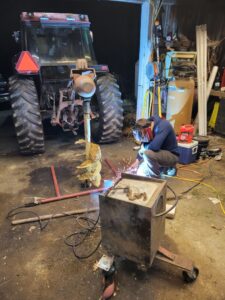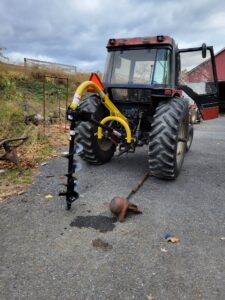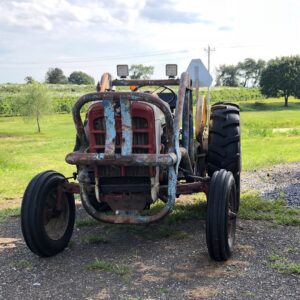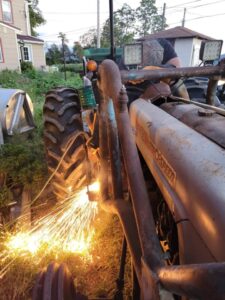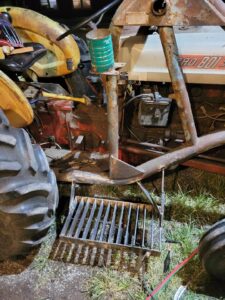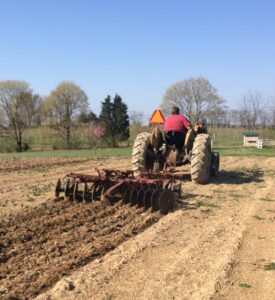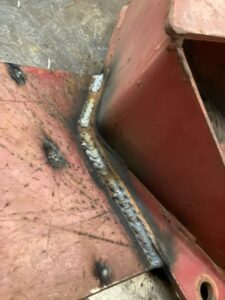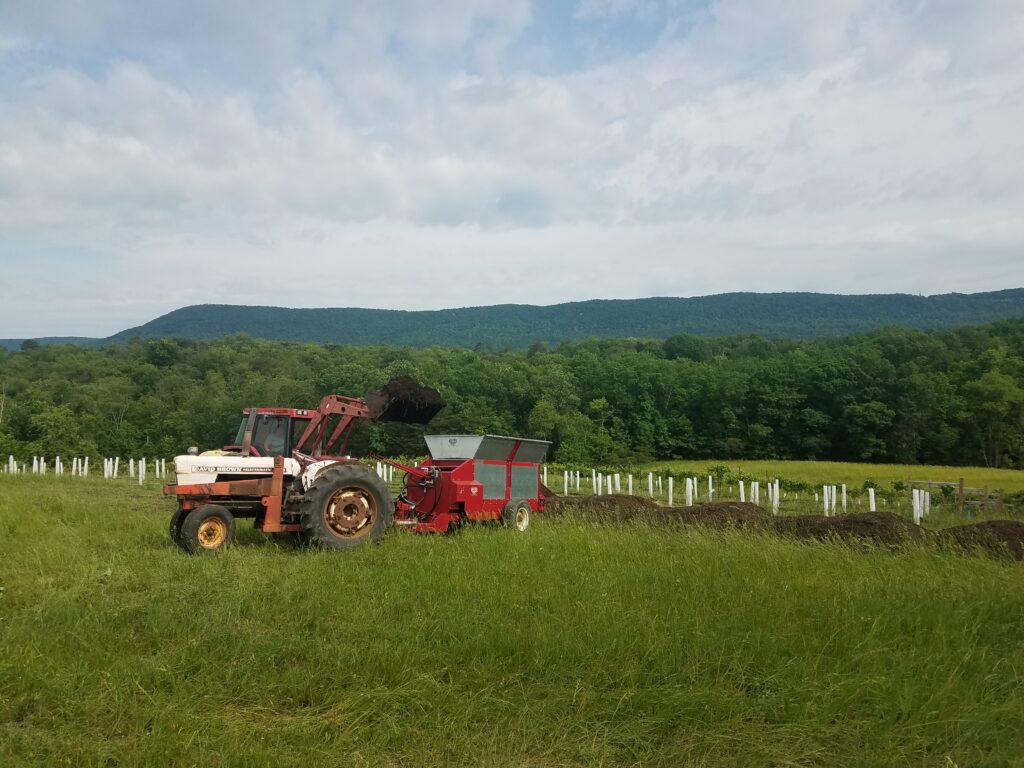Some problems are as old as Farming. Man versus Rock. Man versus Stump. But since the combustion engine: Man versus Tractor. Here we chronicle the triumphs and failures of Mankind and the Tractors at the Long Shot Farm.
The Curse of the Flat Tire
Spring is a beautiful time on a farm. Dormant plants begin to awaken, buds break through, and sleepy bulbs emerge from the ground. The flowers are blooming and the grass is growing. And so, the tractors at the Long Shot Farm are carted out and hooked up to their implements of cultivation to accomplish springtime chores like mowing, mulching, and general clean up. But while Spring is a magical time of the year for the plants, it can be a tiresome time as one slowly discovers all of the needed tractor repairs that have accumulated over winter, as our Engineer acutely experienced not so many weeks ago…
Our story begins with the “rust colored tractor”. It had been snugly parked all winter in the tractor shed, dreaming dreams of diesel and hydraulics, but it was time to hook the old girl up to the sprayer and take her out to the vineyard. The Engineer gently backed the tractor out of the shed and realized the rear tire was leaking fluid. Rear tractor tires are filled with liquid for weight and traction, often salted to avoid freezing. After some investigation, it became clear that the valve stem had broke off and a more professional repair was required.
The Farmer Called the Tire Man.
“I need a new rear tire inner tube.” Tire Man: “I’ll be by shortly.”
The Tire Man removed the faulty tire, drained the liquid, and took off the damaged tube. It then became clear that the tire rim had rusted through, even more than the chic coat of rust the tractor usually sports. The Welder was summoned to fashion a new rim. After a few cuts from the angle grinder and some molten metal, in short order, the Welder and the Tire Man repaired the tractor and she was ready for work.
The next day, the Engineer happily drove the “rust colored tractor” to his house, about 1/2 a mile away, with the intention of attaching the mower. The sky was blue after the wet spring showers, so the lush grass was thick, and it is best, of course, to keep ahead of it. Merrily humming to himself atop the tractor while envisioning the mountains of hay to be made, there was water, water(?!), everywhere, but not drops you’d like to drink. The back rear tire….the same tire…was spraying fluid everywhere. With a brief curse against the Welder, whose fault it must be, the Engineer urgently pulled into his driveway to inspect. Clearly intending to be helpful, the tire had picked up a 12 inch adjustable wrench, a tool often needed for the tractor. Helpful though this may be, a tire should not pick up a 12 inch adjustable wrench by completely embedding it into itself. Yes, a wrench somehow, either from a perch near the tractor seat or from the road below, suddenly assumed the precise angle to successfully drive itself through the newly repaired tractor tire. This time the tire was completely ruined.
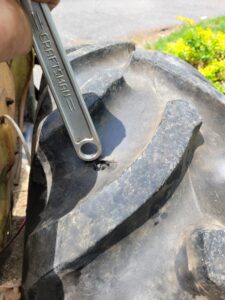
The Farmer Called the Tire Man.
“I need new rear tire.” Tire Man: “I’ll be by shortly.”
The next day, the Engineer, somewhat less happily, decided to take out the “blue colored tractor” from his house, and drive it over to the Winery and mow the vineyard. He successfully drove the blue tractor the half mile to the winery, and just completed his first loop about the vineyard when it became clear that the front tire was flat with a giant pencil sized hole in it. How did this happened? God only knows.
The Farmer Called the Tire Man.
“I need new front tire.” Tire Man: “I’ll be by shortly.”
With the “blue colored tractor” unavailable for mowing, our Engineer, decidedly scowling at this point, went to hook the “red colored tractor” up to the high lift. Though some might think it extravagant to have so many tractors, it is a rule of farming that however many tractors one might have, only one is currently working when the other two are needed, as our tale clearly demonstrates. In any case, if he couldn’t mow, at least he could use the high lift to move some of the excavation dirt, to fill-in wash-outs and ditches, and clean up around the place. The Engineer, for the fourth time in one week, on the third tractor, quickly discovered that yet another front tire was also flat.
The Farmer Called the Tire Man.
“I need…” Tire Man: “I’ll be by shortly.”
But the Engineer, tired himself, went to bed.

